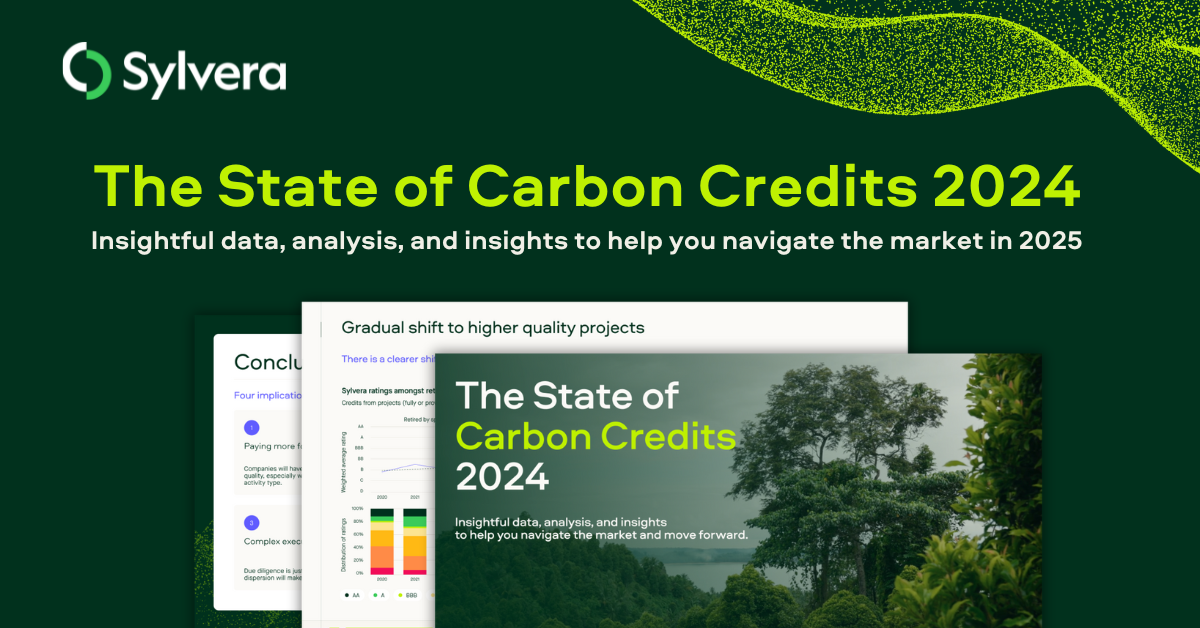Carbon markets returned to growth in 2024 as part of ‘gradual but significant transition’, Sylvera finds
Sylvera, a leading carbon data platform, has today launched its State of Carbon Credits Report 2024 analysing market data to review the state of the market, discussing underlying drivers and future implications for buyers and investors.
The report found that the market returned to growth in 2024, albeit at a marginal rate of 0.2%, mirroring a plateau that has affected the industry since 2021. Total retirements in 2024 amounted to 176 million.
A gradual shift to higher-quality projects
The report finds that total demand remains strong, driven by growing recognition that buyers can now identify high-quality projects, and that carbon markets provide a valuable way for companies to contribute to meaningful climate action.
Retirements are increasingly from high-quality credits, with a 25% increase in credits rated BB and above, totalling 41.7 million – versus 33.4 million the year prior.
Retirements rated B and below decreased by 25% to 29.8 million, down from a previous level of 39.7 million in 2023.
Allister Furey, CEO of Sylvera, said: “The headline retirement figures fail to tell the full story of the carbon markets over the last few years, glossing over the undercurrent of structural changes that are set define the industry for the second half of the decade.
After the controversies of recent years, business leaders are more attentive than ever when it comes to the quality issues with carbon credits. We are seeing more companies are now screening out high-risk projects, or simply avoiding entire project categories that are prone to overcrediting and permanence risks.”
Buyers willing to pay price premium
The analysis finds that buyers are generally paying a premium for higher quality credits, average +$5 per rating band in Afforestation, Reforestation, and Revegetation (AAR) projects.
Nonetheless, there is still significant price dispersion within each rating level. While some of this may reflect a premium on other project attributes (e.g., co-benefits), this data suggests some buyers might be overpaying for their credits
Furey added: “With buyers increasingly favouring higher quality credits, they are willing to pay a price premium for access. We expect this demand for high-quality credits to accelerate as compliance and voluntary markets converge, squeezing the availability of eligible credit for the likes of Article 6.4, CORSIA and other regulatory programmes.”
Supply side maintains the status quo
Sylvera found that the majority of retirements come from Renewables (29%) and REDD (29%) projects, mirroring a trend that has existed since 2021. Tech avoidance solutions were the most popular retirement, accounting for 55% of the market, followed by nature-based credits, which accounted for the remaining 45%. Durable carbon dioxide removals only accounted for 0.11% of retirements.
Verra remains the dominant registry in the voluntary carbon market with a 63% market share of retirements, but it saw a slight decline of 3% compared to the year prior. In contrast, Gold Standard grew its presence as the second largest registry, increasing 3% over the same period to 20%. The International Carbon Registry, Puro, BioCarbon Standard, Eco Registry, Climate Actions Reserve and the American Carbon Registry made up the remaining retirements.
The full report can be downloaded here: The State of Carbon Credits 2024.

